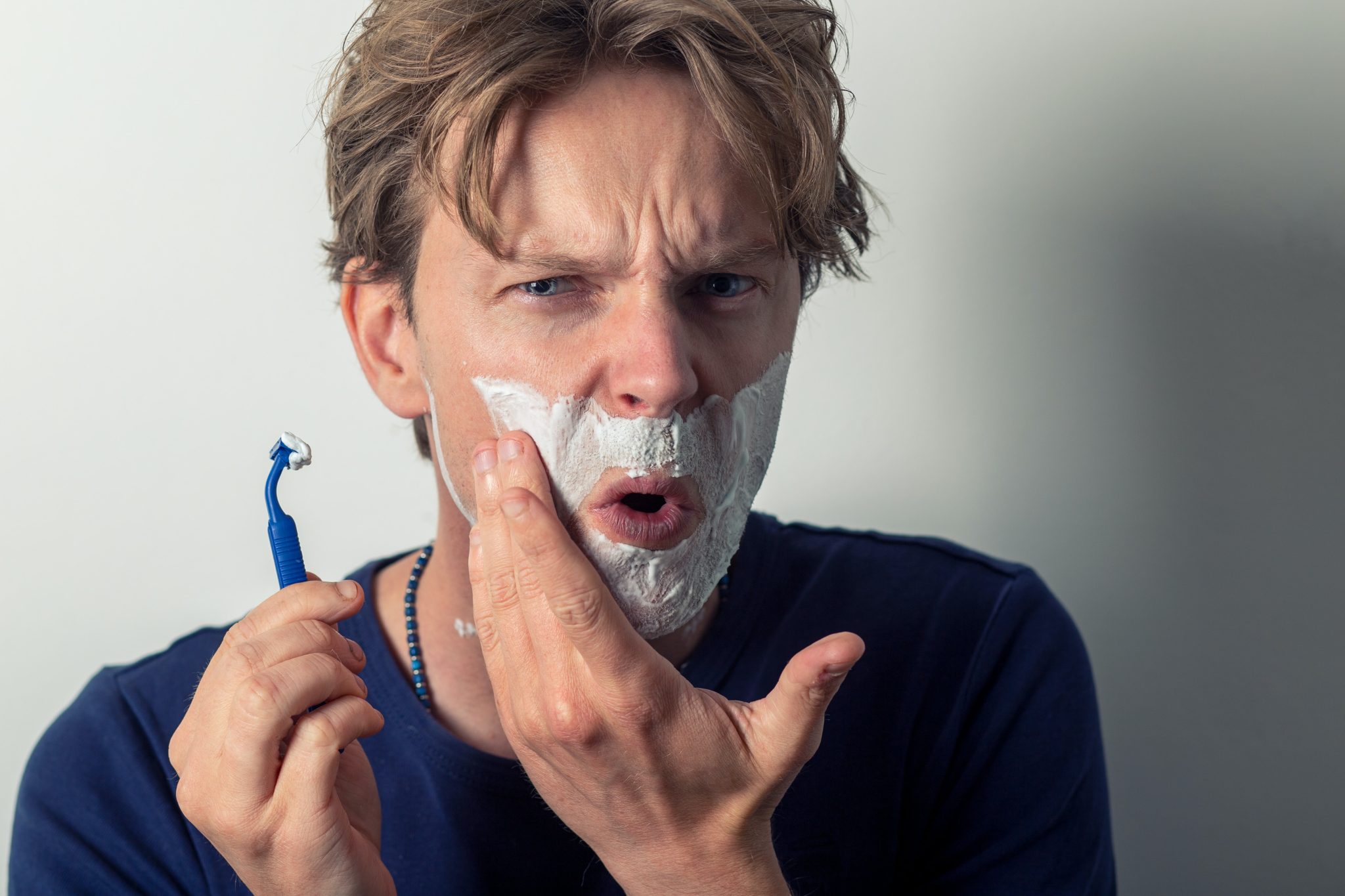
Folliculitis occurs when hair follicles become damaged, infected, and inflamed.1 Genital folliculitis, or vaginal folliculitis, is a form of folliculitis that occurs in the female genital area.2 Although the infection is not contagious, the close proximity of hair follicles in that region can allow for the infection to spread.2 This infection can cause the inflamed hair follicles in the mons pubis and vaginal region to appear like acne.2 Genital folliculitis is common in individuals with coarse pubic hair, as well as those who shave the genital region often.
Causes of Genital Folliculitis
Folliculitis occurs when hair follicles become damaged, infected, and inflamed.1 Typically caused by bacteria called Staphylococcus aureus (commonly known as staph), viruses, other strains of bacteria, or fungi, the infection can occur as a result of shaving, wearing tight clothing, or touching and rubbing against the skin frequently.2,3 A common reason why one might become infected with genital folliculitis is from wearing tight clothing while exercising. The friction from tight underwear rubbing against the skin combined with sweat produced during exercise can create an optimal environment for the microorganisms that cause folliculitis.2 Another possible reason for genital folliculitis is coarse hair, such as pubic or beard hair, rubbing against the skin of the vagina during oral sex or penetrative sex. The roughness of these hairs can irritate the skin and cause enough friction to damage the hair follicles and allow for an infection. The skin is especially sensitive after shaving.2
Symptoms of Folliculitis
Although folliculitis can appear like acne, one can tell the difference by identifying the presence of hair in the middle of the follicle bump. Folliculitis is usually painless, but the bumps can be red or sore. Below are the most common signs of folliculitis.3
- Clusters of small red bumps or white-headed pimples
- Red bumps or pimples with a hair in the center
- Pus-filled pimples that break open and crust over
- Itchy, burning, painful, or tender skin
Vaginal folliculitis caused by ingrown hairs may appear as a small, raised bump with a dark line or spot in the middle.2 In more severe cases, the entire hair follicle is involved and boils may develop in the form of a painful pink or red bump. A cluster of these boils is called a carbuncle.3
Side Effects and Complications
If severe folliculitis is left untreated, it could result in recurrent infections, boils underneath the skin, permanent scarring or dark spots, or permanent hair loss.3
Types of Genital Folliculitis
Although there are many types of folliculitis, there are 2 main types that affect the vaginal region:
Razor bumps (pseudofolliculitis barbae)

Razor bumps occur when the skin becomes irritated by ingrown hairs. This condition can arise anywhere on the body that is frequently shaved. As new hair grows back, developing hair strands may become trapped underneath the skin. As the trapped hair continues to grow, the skin may become irritated, inflamed, and infected.2 Individuals with curly hair who shave too close as well as those who get bikini or Brazilian waxes may develop itchy, ingrown hairs. This type of folliculitis may leave dark raised scars on the skin (keloids).3
Hot Tub folliculitis (pseudomonas folliculitis)
Hot tub folliculitis is caused by exposure to Pseudomonas bacteria. These bacteria can be found in hot tubs and heated pools in which chlorine and pH levels are not well-regulated. This type of folliculitis may appear as a rash of red, itchy bumps, typically within 24 to 48 hours of exposure.3
Treatment of Folliculitis
Treatment for folliculitis depends on the type, severity, and area infected. Genital folliculitis is typically mild and can be prevented through proper care and hygiene. Mild folliculitis often goes away on its own in about 2 weeks.4 Below are some home remedies.3
- Applying a warm compress that is moistened with a saltwater solution several times a day
- Trying over-the-counter antibiotics such as creams and gels
- Applying soothing lotions such as hydrocortisone cream
- Cleaning the infected skin with antibacterial soap
- Using a clean towel each time
- Shaving infrequently to protect the skin
In more severe cases, doctors may prescribe creams or pills to control and fight infection and to reduce inflammation.4 Other options may include minor surgery or laser hair removal if necessary.4
Prevention of Folliculitis
Folliculitis can be uncomfortable and distressing, but there are preventative measures that may help avoid contracting the infection. Below are the steps you can take to reduce your likelihood of developing folliculitis:
- Bathe or shower daily and after exercising
- Avoid sharing towels and other personal items
- Avoid wearing tight clothing
- Change razor blades frequently for shaving
- Apply soap with warm water in circular motions before shaving to lift hairs
- Shave in the direction of hair growth instead of against the grain
- Avoid or stop shaving if possible
- Consider using hair-removal products or other methods of hair removal
- Only use clean and well-regulated hot tubs and heated pools. Shower right away after use.3,4


Concluding Remarks
Genital folliculitis is a common, often mild skin condition in which hair follicles in the vaginal region become infected and inflamed. Folliculitis can become a persistent condition but can easily be prevented with proper care and good hygiene habits.1
We highly recommend seeing a healthcare provider if you have any concerns. A quick exam will determine if the genital folliculitis is mild or severe. Severe cases need to be medically treated or there will be permanent damage to the skin.
References:
- Folliculitis. (2021, June 10). Cleveland Clinic. Retrieved February 6, 2022.
- Vaginal Folliculitis and Treatment. (2021, November 30). Flo.health. Retrieved February 6, 2022.
- Mayo Clinic. (2020, August 18). Folliculitis. Retrieved February 6, 2022.
- Healthwise Staff. (2020, July 2). Folliculitis. Michigan Medicine. Retrieved February 6, 2022.






































